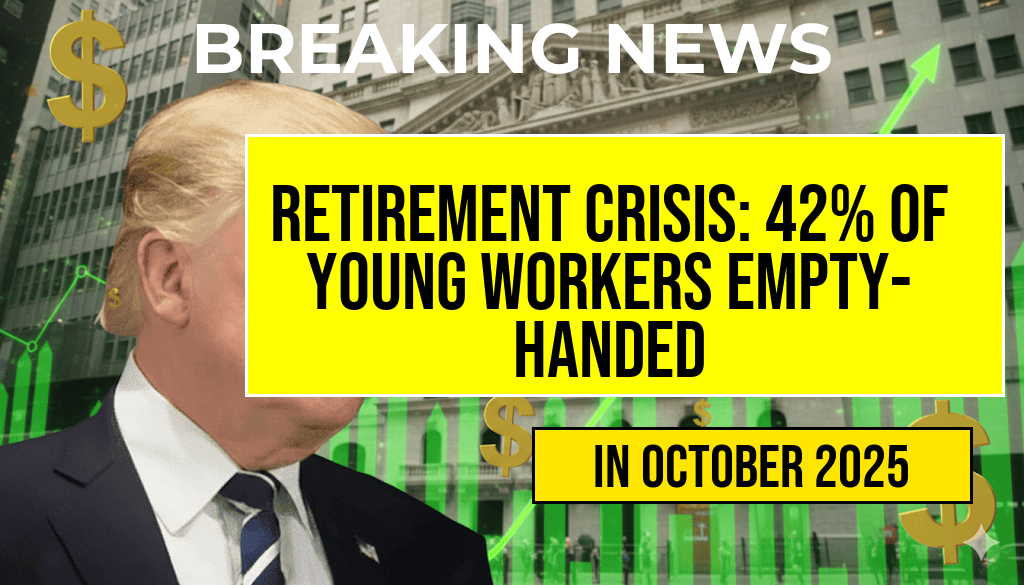As retirement savings remain a growing concern across the United States, recent surveys reveal a troubling trend among younger workers: nearly 42 percent of individuals under 40 report having no spare cash beyond their immediate expenses. This financial vortex, driven by rising living costs, stagnant wages, and mounting debt, threatens to leave a significant portion of the workforce unprepared for retirement. Experts warn that without targeted intervention, this demographic faces a future where financial insecurity could become the norm rather than the exception, exacerbating existing economic disparities and straining social safety nets.
The Scope of the Crisis
A comprehensive report published by the Employee Benefit Research Institute (EBRI) underscores the depth of the issue. According to their findings, only about 58 percent of workers aged 25-39 have any retirement savings, and among those, the median balance remains alarmingly low at approximately $3,000. For many, this shortfall reflects broader economic challenges: stagnant wages that have failed to keep pace with inflation, high student and credit card debt, and the rising costs of housing and healthcare.
Factors Contributing to the Financial Vortex
Stagnant Wages and Rising Living Costs
- Real wages for younger workers have seen minimal growth over the past decade, reducing disposable income.
- Housing costs have surged, with median rent increasing by over 30% since 2010, making it difficult to save.
- Healthcare expenses continue to outpace inflation, further constraining budgets.
Debt Burden and Financial Literacy
- Student loan debt now exceeds $1.7 trillion nationwide, impacting savings capacity for many recent graduates.
- Credit card debt levels remain high, with the average household carrying around $6,000 in revolving debt.
- Limited financial literacy hampers informed decision-making, leading to poor savings habits.
Implications for Future Retirement Security
| Age Group | Percentage with No Retirement Savings | Median Retirement Balance |
|---|---|---|
| 25-39 | 42% | $3,000 |
| 40-54 | 25% | $16,000 |
| 55-64 | 15% | $49,000 |
The consequences of this trend extend beyond individual hardship. As a significant portion of the workforce enters retirement with limited or no savings, reliance on social safety programs such as Social Security could increase dramatically. The Social Security Administration projects that, without changes, benefits may need to be adjusted downward, which could further diminish the income of retirees already struggling to cover basic needs.
Policy Responses and Industry Initiatives
Legislative Efforts
Recent proposals aim to address the retirement savings deficit through policies such as automatic enrollment in employer-sponsored plans, expanded access to individual retirement accounts (IRAs), and incentives for small businesses to offer retirement benefits. The Secure Act 2.0, for example, seeks to make retirement savings more accessible and flexible for younger workers.
Employer and Financial Sector Initiatives
- Several companies are adopting auto-escalation features in their 401(k) plans to encourage higher contributions over time.
- Financial institutions are developing low-cost, beginner-friendly investment options tailored for younger investors.
- Educational programs aimed at improving financial literacy are increasingly integrated into workplace wellness initiatives.
Steps Toward Financial Resilience
Experts recommend a multi-pronged approach to mitigate this crisis. Building an emergency fund covering at least three to six months of expenses is a critical first step. Simultaneously, early engagement with retirement planning tools, coupled with ongoing financial education, can improve long-term outcomes. Employers and policymakers play a vital role by creating environments that make saving easier and more appealing for young adults.
Resources like Wikipedia’s overview of retirement savings and Forbes’ insights on early retirement savings offer additional guidance for individuals seeking to improve their financial health. Addressing the retirement savings crisis requires concerted efforts from all sectors of society to ensure that future retirees are not left navigating the economic storm without adequate financial resources.
Frequently Asked Questions
What is the current state of retirement savings among younger workers?
Nearly 42 percent of younger workers have No Spare Cash to contribute toward their retirement savings, highlighting a significant financial crisis in preparing for retirement.
What factors are contributing to the retirement savings crisis among young adults?
Factors include high living expenses, student debt, low income growth, and lack of financial literacy, all of which limit their ability to save for retirement.
How does the lack of retirement savings impact younger workers in the long term?
Without adequate retirement savings, younger workers face financial insecurity in old age, increased reliance on social safety nets, and a greater risk of financial hardship during retirement.
What can policymakers and employers do to address the retirement savings crisis?
They can implement automatic enrollment in retirement plans, provide financial education, and create incentives to encourage saving early and consistently.
What steps can individual workers take to improve their retirement savings prospects?
Workers should consider starting to save early, take advantage of employer matching, create a budget that prioritizes retirement contributions, and seek financial advice to plan effectively.






